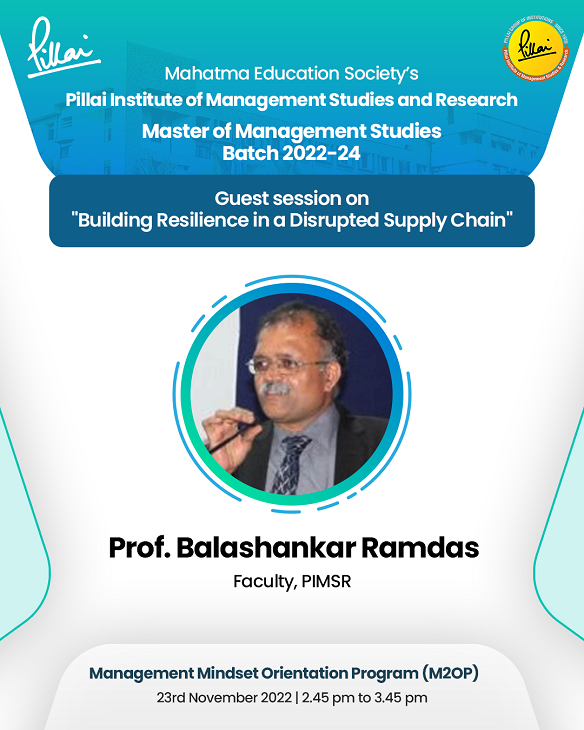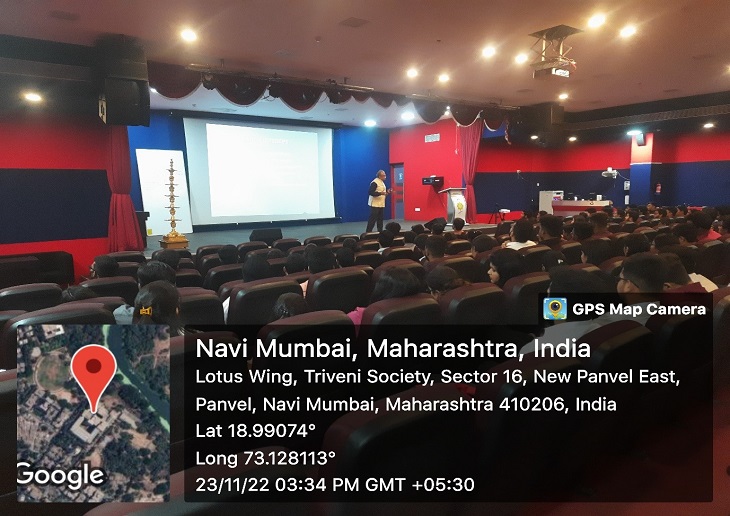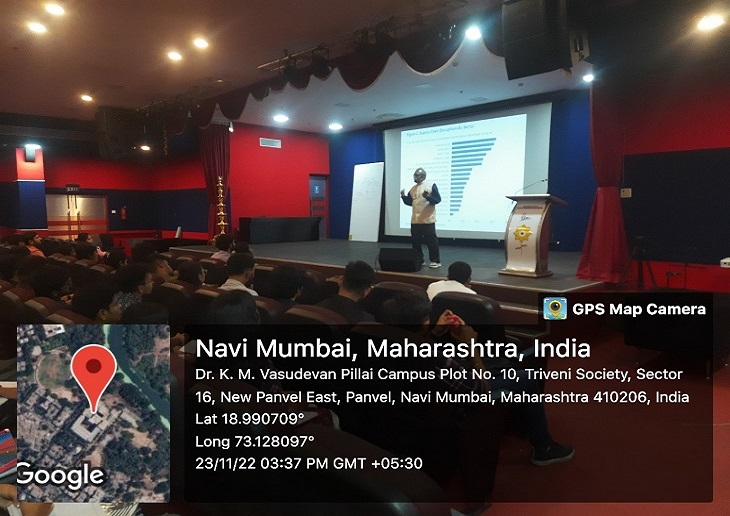Topic: Building Resilience in a Disrupted Supply Chain
Date: 23rd November, 2022
Faculty: Prof. Balashankar Ramdas
The topic for the M2OP, Building Resilience in a Disrupted Supply Chain was selected as we have very recently faced a massive pandemic and the most vulnerable spot in the business chain turned out to be the supply chain which got badly hit owing to the crippling of resources. The stoppage of transportation hit the movement of goods worldwide leading to disruption of both supply and demand.
The workshop was designed to explain the causes, consequences and mitigation strategies for the issue at hand.
The students were introduced first to the two main types of Disruptors:-
- External: which consists of Demand risks arising out of demand miscalculation due to unsure demand prediction, supply risks due to non-arrival of resources, Business risks arising due to changes in business plans and finally Environmental risks which arise when supply chains are disrupted by governmental, political, socio-economic, or environmental factors.
Other common disruptors are Force Majeure, Tsunami, and Volcanic
Disruptions, Cyclones, Earthquakes, Covid 19, Flash Strikes, Major Accidents - Internal: Which includes Manufacturing Risks, Shipping Risks, Planning & Control Risks, Business Risks & Contingency Risks.
Next topic taken for discussion was the consequences as a result of the disruption to business.
They are mainly:
- A drop in demand
- A demand surge
- Reduced Productivity
- Storage and access restrictions and finally
- Raw material shortages.
Once the students had understood the causes and consequences the mitigation strategies were taken up which includes:-
- Creating a contingency plan for supply chain emergencies
PPRR risk management model. The “PPRR” stands for:
Prevention: Taking measures to reduce the impact of supply chain disruption before it happens.
Preparedness: Creating a contingency plan should a supply chain emergency take place.
Response: Implementing the contingency plan when disruptions occur.
Recovery: Resuming normal operations as quickly as possible. - Auditing the supply chain’s vulnerability
- Identifying backup suppliers and diversify your supply base
- Building up inventory
- Improving the transparency of the supply chain.
The Session was highly interactive and with live examples introduced in the session the students were able to grasp the complex issues involved in the discussion.








